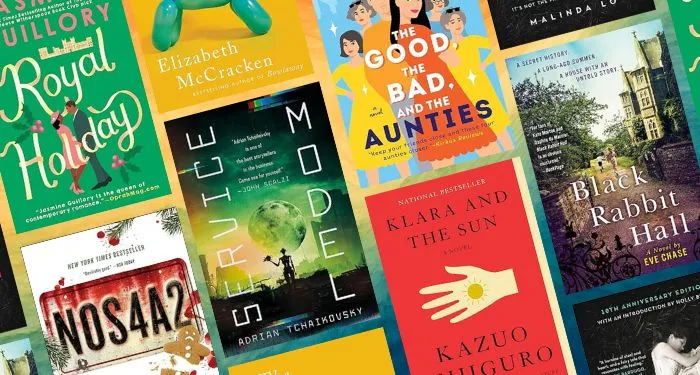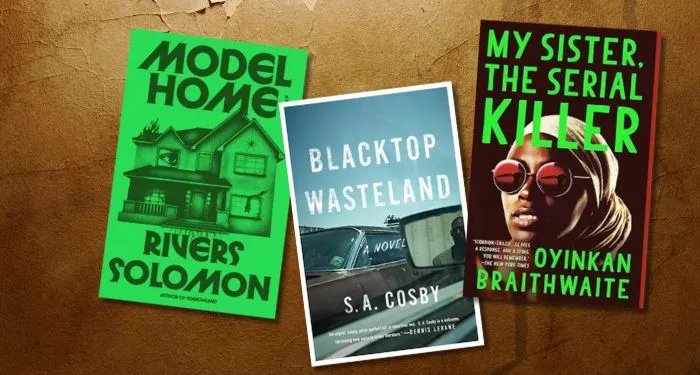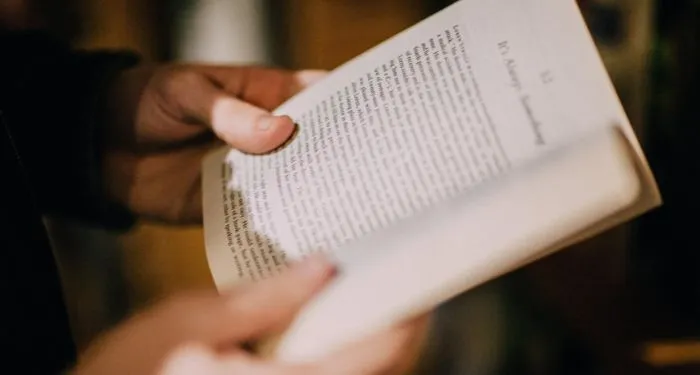Sanford Schwartz once wrote in The New York Review that when David Salle puts down his brush and picks up his pen to write art criticism, he does so with the same “seemingly out-of-nowhere assurance” with which he arrived on the painting scene in the late 1970s. His crisp but pensive judgments have appeared for nearly a decade in our pages, where he has often written about living, working artists, from the painters Laura Owens, Charline von Heyl, and Alex Katz to the sculptors Rachel Harrison, Charles Ray, and, in this year’s Art Issue, Arlene Shechet.
In his dispatch from the Hudson Valley’s Storm King Art Center, where an exhibition of Shechet’s work was on view last year, Salle writes that her large-scale aluminum-and-steel sculptures, which are painted “the colors of marzipan or Jordan almonds,” use “off-kilter, surprising harmonies of shape, material, texture, and color with aplomb.” Wandering around the great sculpture garden, he bristles against the idea that a given artwork must argue for “one true thing.” Shechet’s complex ensembles prompt him to ask: “What if more than one thing is true?… Why not all these things at once?” For him she achieves, “in the rightness of her combinations, a kind of alchemy of style.”
I e-mailed Salle this week—he was in South Korea for the opening of an exhibition of his work—to ask about the effect of these ensembles, and about his own life and writing.
Sam Needleman: What was your childhood in Kansas like? What were your early experiences with art?
David Salle: I was blessed early on with a wonderful teacher in Wichita, a woman named Betty Dickerson. She and her husband, Bill, ran a private art school modeled on a nineteenth-century atelier. There was life drawing, of course, but also color theory and composition and so on. I started with the Dickersons when I was nine, and a lot of what I know about painting I credit to them. The Wichita Art Museum had a good, focused collection of early-twentieth-century American art—one of everything, Edward Hopper, Arthur Dove, Georgia O’Keeffe, Yasuo Kuniyoshi, Marsden Hartley, the Stieglitz group—that formed the core of my art education. When I was eleven or twelve they brought in a loan show from MoMA of Abstract Expressionism. It was the first time anyone in that part of the world had seen a Willem de Kooning, Franz Kline, or Helen Frankenthaler in person. Weirdly, I don’t remember if there was a Jackson Pollock or not, but I’ll never forget the sensation of seeing a great De Kooning up close. It has only just now occurred to me that the show was likely put together by Frank O’Hara—that was his job at MoMA at the time.
When and how did you begin to write about art?
I did some reviewing in my early twenties when I first came to New York, just to earn a little money. Then I didn’t do it again until relatively recently, maybe starting fifteen years ago. Whenever art people get together, at dinners or whatever, they sort of go around the table and everyone gives their opinion about an artist or a show. When it was my turn, inevitably someone would say, “You should write that down.” This happened often enough that I started to take it seriously. Everyone has an opinion, but clarity was apparently in short supply. One day I just picked up a pen. I found that I loved the process of putting a visual sensation into words; it gives me an obscene amount of pleasure to be able to do it.
Which of the many intellectual battles among American art critics in the last half-century has most affected you?
I’ve only ever been aware of one ongoing battle, which is between the people who use art to illustrate an idea, and the experientialists, which is a word I just made up. People say all kinds of things about art, but you have to ask yourself if it’s really true, if it describes your experience of looking. I used to think that a lot of people who write about art or who deal with art are just not particularly visual. I still think that’s true, but now I realize they’re not really interested in art as such. They might not even believe such a thing exists. Their subject is power.
That is all well and good, but the problem is how to determine which art is actually doing something as opposed to merely pointing to something. It’s a problem of synecdoche—the part standing for the whole. It leads to a kind of reckless, or wishful, thinking. Certain artists or certain styles are thought to signify not just virtue but an act of resistance. So much of how art is received is contextual, but do we really want to believe that it is only that? We’ve gone from a time of allusion and metaphor to one of literal-mindedness. To be clear, both ends of the spectrum can be a problem. Each provides cover, a place to hide out for the lazy or the less than brilliant.
You’ve written in our pages about artists of many stripes. What ultimately draws you to a subject?
I have to feel like I actually have something to say about an artist, not just repeat what everyone already knows. Beyond that, I might feel compelled to write about an artist for two very different reasons. If someone’s work really sends me, like, say, Alex or Charline, I want to try to get across to the reader just what I think is so great about it—the way in which it’s great. Then there are the artists who enjoy high approval ratings but about whom I’m ambivalent, like Charles Ray or Danh Vo. In those cases I want to try to figure out where my ambivalence is coming from; what is it exactly that prevents me from being convinced? In both cases it’s about looking under the hood. I try to figure out how something really works, how all the components interact to produce a style. To do that I have to project myself into someone else’s motivation, to inhabit their decision-making apparatus. I often don’t exactly know where this investigation is going to lead; I try to leave the conclusion for last.
In your essay on Shechet you write that “most artists can be said to create their own precursors.” Who are yours?
It depends on how far back we pull the camera—wide shot or close-up. There are precursors of sensibility and precursors of style, and they each contributed different things to the mix. Also, to say someone is a precursor isn’t exactly the same thing as to say they are an influence. You come into the world as an artist at a certain time and place, and there are usually dominant styles that it would be hard not to be influenced by. They’re sort of in the air, especially if you’re of a particular temperament. In my case those figures were Robert Rauschenberg and Jasper Johns; I was keenly aware of both artists fairly young, already by the mid-1960s. They each represent something fundamental to the way I think about painting—both what it can mean and how to go about making it.
But the “precursor chain” moves backward and forward; there’s a whole other side. I grew up looking at so much art that I feel close to as well: Walt Kuhn and Hartley—the tradition of modernist realism—and before that all the way back through the great chain of being that is nineteenth-century French painting. Another compass point is Pollock. My work doesn’t on the surface seem to have much to do with his, but if you look at his lyrical all-over composition you can see the connection. I know that early on I was influenced by John Baldessari; he was a teacher of mine, as well as a good friend, but since John had given up painting long before I met him it’s hard to pinpoint exactly what his influence was. That was a matter of sensibility rather than style—the elevation of humor as an aesthetic value, and the awareness that humor is often bound up with its opposite, melancholy.
How does your work as a critic inform your painting?
It’s hard to point to a specific result, but the act of projecting myself into someone else’s process—seeing how they resolve something or fail to, taking the measure of their character—has to affect my own work. Going through that exercise produces a kind of lightness of spirit I can use when I’m painting. It’s not foolproof, but this kind of deconstructing and reconstructing can sometimes help me see when I’ve gotten lost in the weeds while working on a painting.
What kind of reader do you have in mind when you describe a painting or a sculpture?
A reader who is also a looker. I used to love reading reviews by Kenneth Tynan of plays that I hadn’t seen and likely would never see. I’m not an especially avid theater person, but his reviews made me think about what is valuable in life generally.



















 English (US) ·
English (US) ·